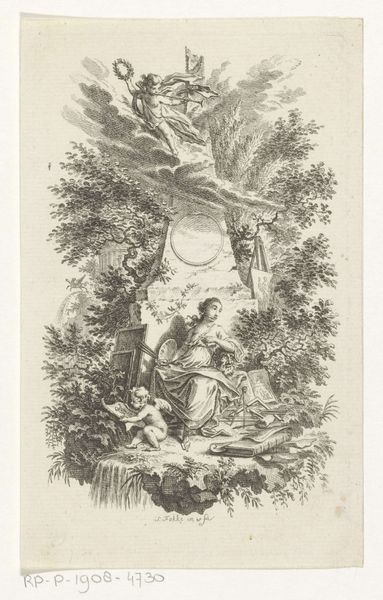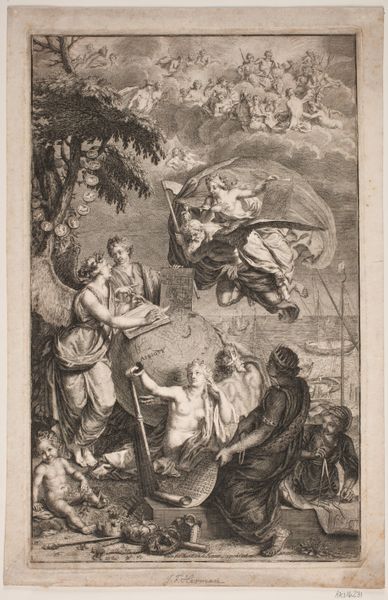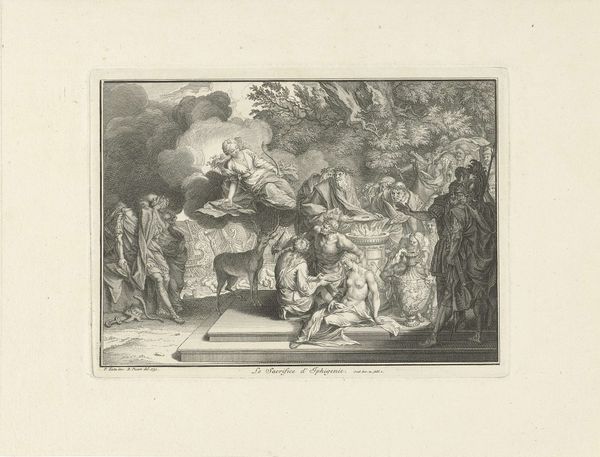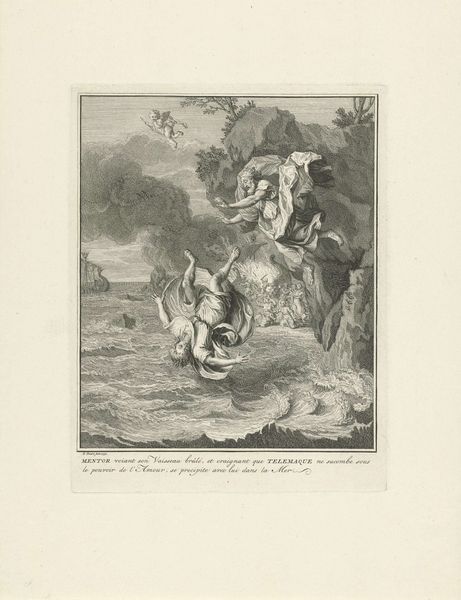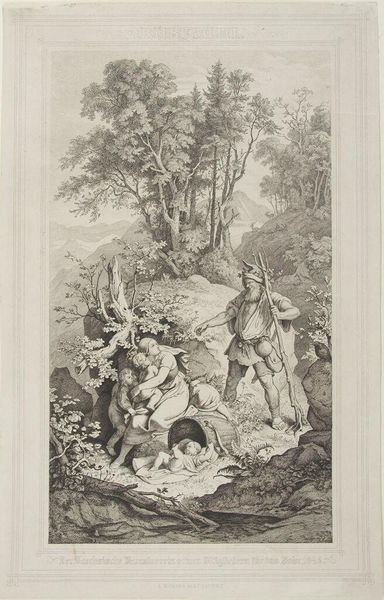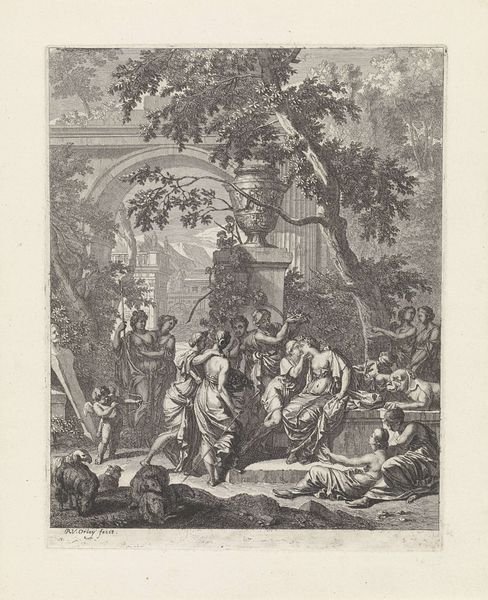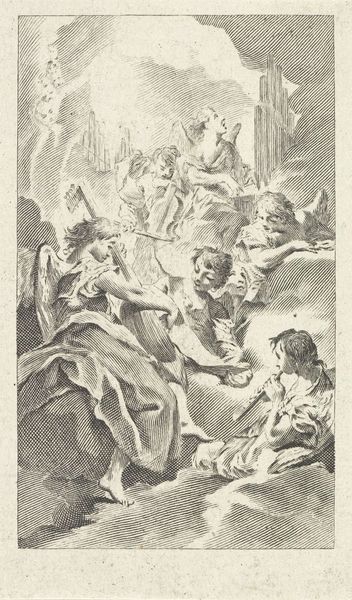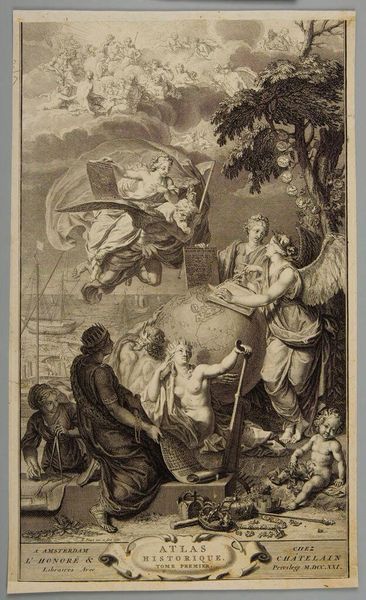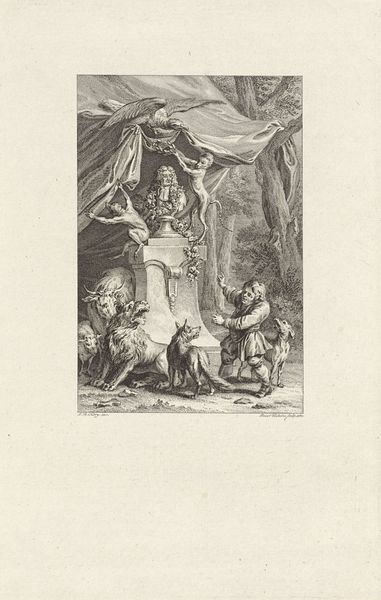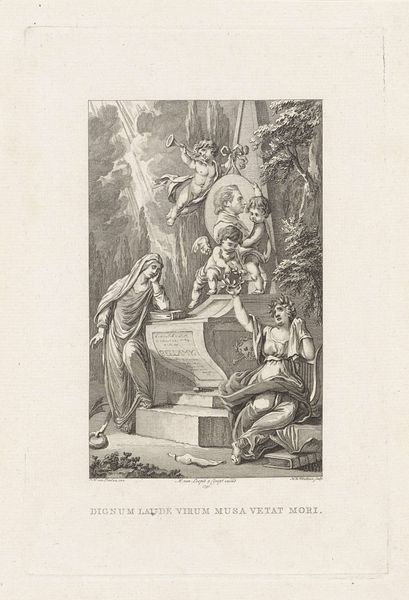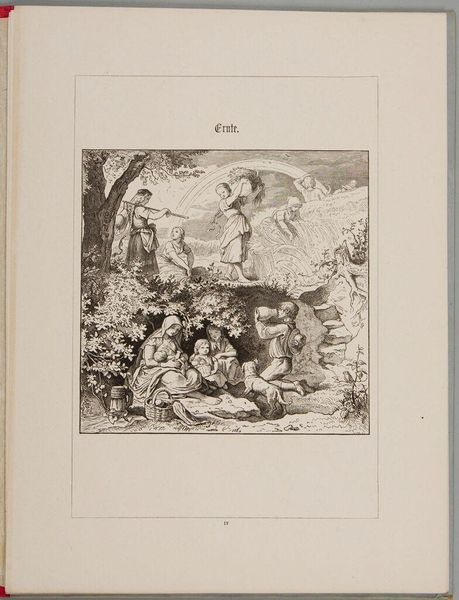
Allegorische voorstelling met figuren en attributen die naar de wereldgeschiedenis verwijzen 1720
0:00
0:00
engraving
#
allegory
#
baroque
#
old engraving style
#
figuration
#
line
#
history-painting
#
engraving
Dimensions: height 409 mm, width 250 mm
Copyright: Rijks Museum: Open Domain
Curator: Ah, here we are. This is Bernard Picart’s "Allegorical Representation with Figures and Attributes Referring to World History," from 1720. An engraving, naturally. Editor: My first thought? The sheer density of symbolism! It's almost overwhelming—like trying to decode a secret society's scrapbook. But also, quite visually stunning in its intricate details. Curator: Indeed. The Baroque loved its layered meanings. What strikes me is the globe. It dominates the center, literally the world upon which this allegory plays out. What do you make of its position in relation to all these figures? Editor: Well, physically, it’s presented almost as raw material, ripe for marking. Look at the winged figure, maybe an angel or personification of Fame, actively inscribing upon it. Next to her a woman holds what appears to be a screen and looks directly at her, or perhaps reading what's being inscribed on the globe itself, and other figures at the foot hold navigational instruments. The production of history itself rendered in ink, the lines etched laboriously in copper plates and printed on paper. What about that celestial grouping at the top? It’s not exactly shy! Curator: They represent divine providence, overseeing events down below. All those billowing robes and chubby cherubs – a standard Baroque flourish, really. It's quite a contrast with the terrestrial figures below, isn't it? But note how it all connects. History as a collaboration, almost a negotiation between earthly and divine powers. I mean, that's one interpretation at least. Editor: It does feel almost collaborative, or dare I say, like Picart might be playfully acknowledging all of the hands—or shall we say labor—required to make, market and disseminate these scenes and allegories in early modern Europe. It definitely adds another layer, doesn't it? Curator: It does! It’s a reminder that these grand narratives aren’t spun from thin air but meticulously crafted through deliberate acts. Looking closely one can even notice, at the very bottom of the print, inscriptions, where the letters begin to tell yet another hidden tale. Editor: Well, thinking about that painstaking, etched line again has me reflecting on how artmaking practices not only reflected their societies but also created it by helping in distributing information and ideologies! Curator: Absolutely. So much to see and to decode! I always notice something different with each encounter.
Comments
No comments
Be the first to comment and join the conversation on the ultimate creative platform.

